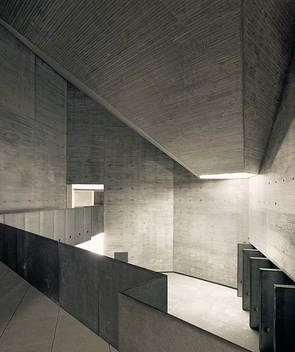External walls today normally consist of multilayer systems, the individual strata of which have different functions; for example, bearing loads, insulating and providing protection against the elements. Generally speaking, this also applies to structures that radiate a sense of solidity through the materials of their exposed outer walls, such as brickwork, concrete and stone; although this does not have to be the case, as Dietmar Eberle argues. In his article, he discusses an office building with unusually thick, monolithic brick walls that he and his team have just completed in Vorarlberg. His principal aim there was to exploit the thermal storage capacity of the material to achieve internal comfort and energy efficiency.
In the Ravensburg Museum of Art, the architects, Lederer Ragnarsdóttir Oei, were also concerned with an economic use of energy. The special quality of this building, in which recycled bricks were used for the facades and the roof, lies in its circumspect integration in the historic city centre without sacrificing its own distinct identity. In this respect, a special role is played by the curved, load-bearing roof vaulting, which forms a distinctive feature of the building both internally and externally.
In contrast, the architects of the new funeral chapel in Ingelheim and the visitors’ centre in Heidelberg Palace emphasized the rough, sensual qualities of the stone exteriors; and in the new arts centre in Cordoba, the impression of a solid volume is reinforced by the sculptural modelling of the exposed concrete elements.
Clay, too, with its obvious environmental advantages, may be seen as a material for a solid form of construction that is still widely used in various cultural realms today. Francis Kéré, who argues that materials are the most important means of expression available to an architect, has been experimenting with clay for a long time in his native country, Burkina Faso, as well as in neighbouring Mali. Commonly used in Africa, clay is often scorned by people there as a cheap construction material. At the same time, it is being rediscovered in Europe, where it is increasingly seen as a natural and somewhat exclusive substance associated with a great investment of human labour.




 진행중입니다.
진행중입니다.